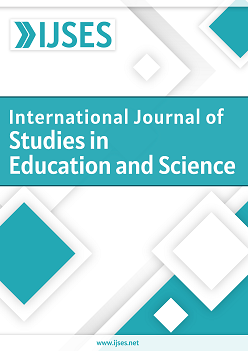Teaching Preparedness of Pre-Service Teachers: Perception to Practice
DOI:
https://doi.org/10.46328/ijses.6Keywords:
Preservice teachers, Theory, Practice, Gaps, Science education, Teaching preparednessAbstract
It is expected from the teacher education institution to shape pre-service teachers in responding to the innovations of the 21st century – implementing life-long learning, guaranteeing the standard of education, and coaching of people for prosperous skilled activities. Thus, the study identified the gaps between theory and practice that might have huge and vital impacts on their professional growth, possible benefits, and challenges to develop and guarantee more efficient and comprehensive teaching-learning practices for all. The study made use of phenomenological research design, specifically descriptive design using narrative analysis. The validated instrument (Questionnaire) were distributed to the respondents (n=45; Secondary Pre-service Science Student Intern) and a purposive sampling was utilized on selected Tertiary Education Institutions. Thematic analysis was applied. Several gaps emerged between theory and practice of pre service science teachers which may have vital impacts for our future educators.References
Ramirez, I. A. L. (2020). Teaching preparedness of pre-service teachers: Perception to practice. International Journal of Studies in Education and Science (IJSES), 1(1), 15-35.
Downloads
Published
Issue
Section
License
Articles may be used for research, teaching, and private study purposes. Authors alone are responsible for the contents of their articles. The journal owns the copyright of the articles. The publisher shall not be liable for any loss, actions, claims, proceedings, demand, or costs or damages whatsoever or howsoever caused arising directly or indirectly in connection with or arising out of the use of the research material.
The author(s) of a manuscript agree that if the manuscript is accepted for publication in the International Journal of Studies in Education and Science (IJSES), the published article will be copyrighted using a Creative Commons “Attribution 4.0 International” license. This license allows others to freely copy, distribute, and display the copyrighted work, and derivative works based upon it, under certain specified conditions.
Authors are responsible for obtaining written permission to include any images or artwork for which they do not hold copyright in their articles, or to adapt any such images or artwork for inclusion in their articles. The copyright holder must be made explicitly aware that the image(s) or artwork will be made freely available online as part of the article under a Creative Commons “Attribution 4.0 International” license.

This work is licensed under a Creative Commons Attribution-NonCommercial-ShareAlike 4.0 International License.





